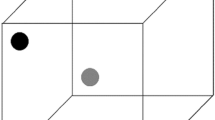Abstract
A preliminary study was made of the application of acoustic emission (AE) testing investigating the effect of elevated temperatures on the bond between the concrete and steel in reinforced concrete.
The specimens studied were of the bond pull-out type having a bond length of the order of twice the maximum aggregate size to simulate local bond stress conditions.
The concrete mix was constant throughout based on natural aggregate and ordinary Portland cement. A constant bar size of 16 mm diameter was employed with both deformed and plain bar types. Temperatures in the range 20–600°C were examined using an electric furnace with a uniform slow heating rate to avoid transient effects. Specimens were maintained at a peak temperature level for an hour to provide good thermal saturation prior to cooling in air. The heating cycle was performed on specimens subjected to a working load, and loading to failure took place in air in the residual ambient condition. Results of slip and AE were obtained with bond stress and comparisons made. In the residual ambient state effects of load cycling before pulling to failure were assessed.
Finally the possibilities of using the AE technique for estimating post-fire properties of reinforced concrete structures is mentioned with comments on the future work necessary to bring about such a procedure.
Résumé
On a réalisé une étude préliminaire de l'essai d'émission acoustique afin d'apprécier l'effet des températures élevées sur l'adhérence béton-acier dans le béton armé.
Les corps d'épreuve étaient du type «essai d'adhérence par traction» avec une longueur d'adhérence de l'ordre de deux fois la dimension maximale du granulat afin de simuler les conditions-locales de contrainte d'adhérence.
L'opération s'est faite avec un mélange de composition constante confectionné avec des granulats naturels et du ciment Portland ordinaire. On a utilisé des barres d'un même diamètre de 16 mm du type haute adhérence ou de type uni. Des températures dans l'intervalle de 20–600°C ont été réalisées au moyen d'un four électrique avec une montée en température uniformément lente afin d'éviter tout effet transitoire. Les éprouvettes ont été maintenues une heure à une température de pointe afin de ménager une bonne saturation thermique sur des éprouvettes soumises à une charge de travail et la charge de rupture est intervenue dans les conditions d'ambiance résiduelles. On a comparé les résultats fournis par le déplacement de la barre et ceux de l'émission acoustique en termes de contrainte d'adhérence. On a évalué les effets du cycle de chargement avant traction dans les conditions d'ambiance résiduelles.
On mentionne enfin les possibilités d'estimer les propriétés après incendie des structures de béton armé au moyen de l'émission acoustique, et l'on considère les travaux futures nécessaires pour l'utilisation de cette technique.
Similar content being viewed by others
Abbreviations
- AER :
-
acoustic emission ratio-emission as a proportion of the total accumulated emission counts at maximum bond stress
- T i' :
-
concrete/steel interface temperature (°C)
- T f' :
-
furnace temperature (°C)
- σ:
-
slip (mm)
- σ b :
-
residual bond stress (N/mm2)
References
Morley P. D., Royles R..—The influence of high temperatures on the bond in reinforced concrete. Fire Safety Journal, 2, Part 4, 1980. pp. 243–255.
Hertz K..—The anchorage capacity of reinforcing bars at normal and high temperatures. Magazine of Concrete Research, 34, 1982, pp. 213–220.
Diederichs U., Schneider U..—Bond strength at high temperatures. Magazine of Concrete Research, 33, 1981. pp. 75–84.
Rostasy F. S., Sager H..—Influence of high temperatures on the bond behaviour of ribbed reinforcing bars. Betonwerk and Fertigteil-Technik, Heft 11, und 12, 1982, pp. 663–669 und 732–738.
Morley P. D., Royles R..—Response of the bond in reinforced concrete to high temperatures, Magazine of Concrete Research, 35, Issue No. 123, June 1983, pp. 67–84.
Royles R., Morley P. D..—Further responses of the bond in reinforced concrete to high temperatures, Magazine of Concrete Research 35, Issue No. 124, September 1983, pp. 157–163.
Royles R., Morley P. D., Khan M. R.—The behaviour of reinforced concrete at elevated temperatures with particular reference to bond strength, paper in “Bond in Concrete”, Editor P. Bartos, Proceedings International Conference on Bond in Concrete, Paisley, 14–16 June 1982, pp. 217–228.
Morley P. D.—Effects of elevated temperatures on bond in reinforced concrete, Ph D thesis, 1982, University of Edinburgh.
Mindess S..—Acoustic emission and ultrasonic pulse velocity of concrete, International Journal of Cement Composites and Lightweight Concrete, 4, 1982, pp. 173–179.
Author information
Authors and Affiliations
Rights and permissions
About this article
Cite this article
Royles, R., Morley, P.D. Acoustic emission and bond degradation in reinforced concrete due to elevated temperatures. Mat. Constr. 17, 185–191 (1984). https://doi.org/10.1007/BF02475242
Issue Date:
DOI: https://doi.org/10.1007/BF02475242




